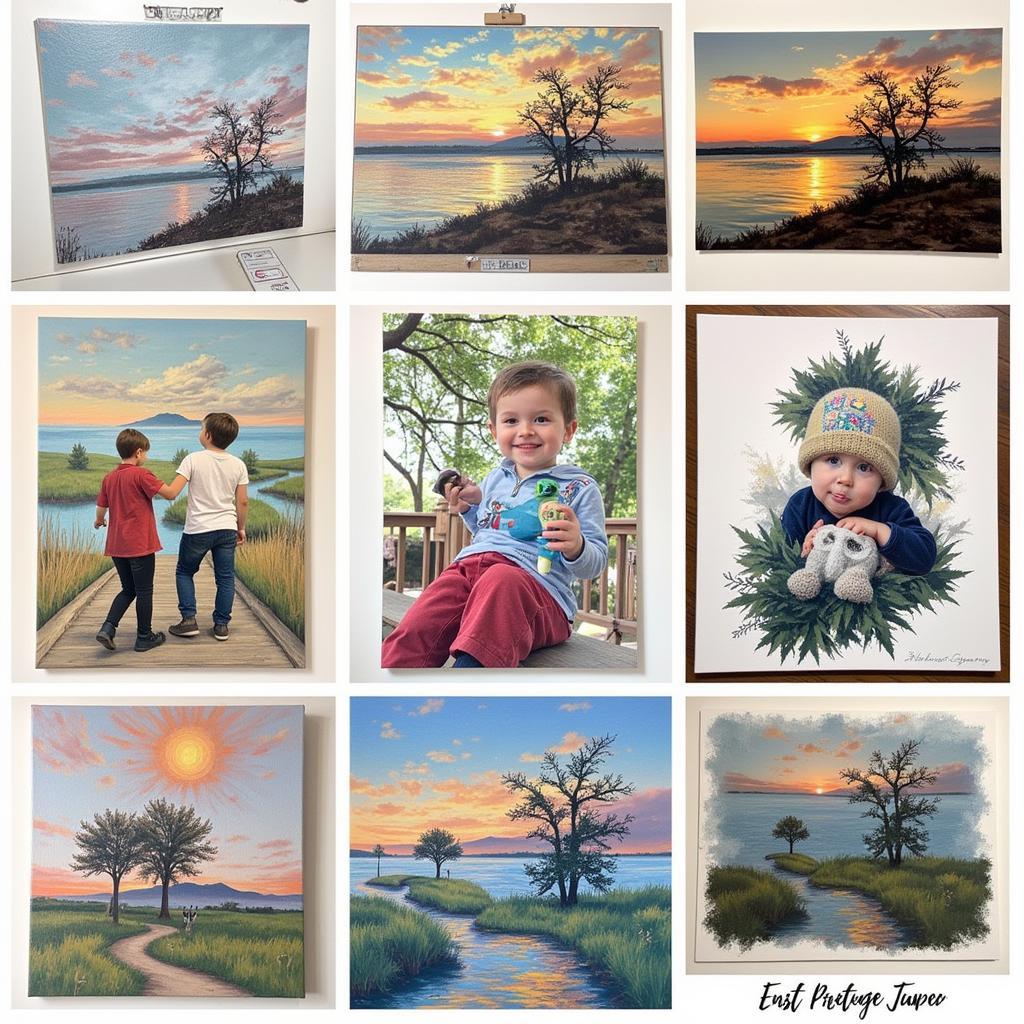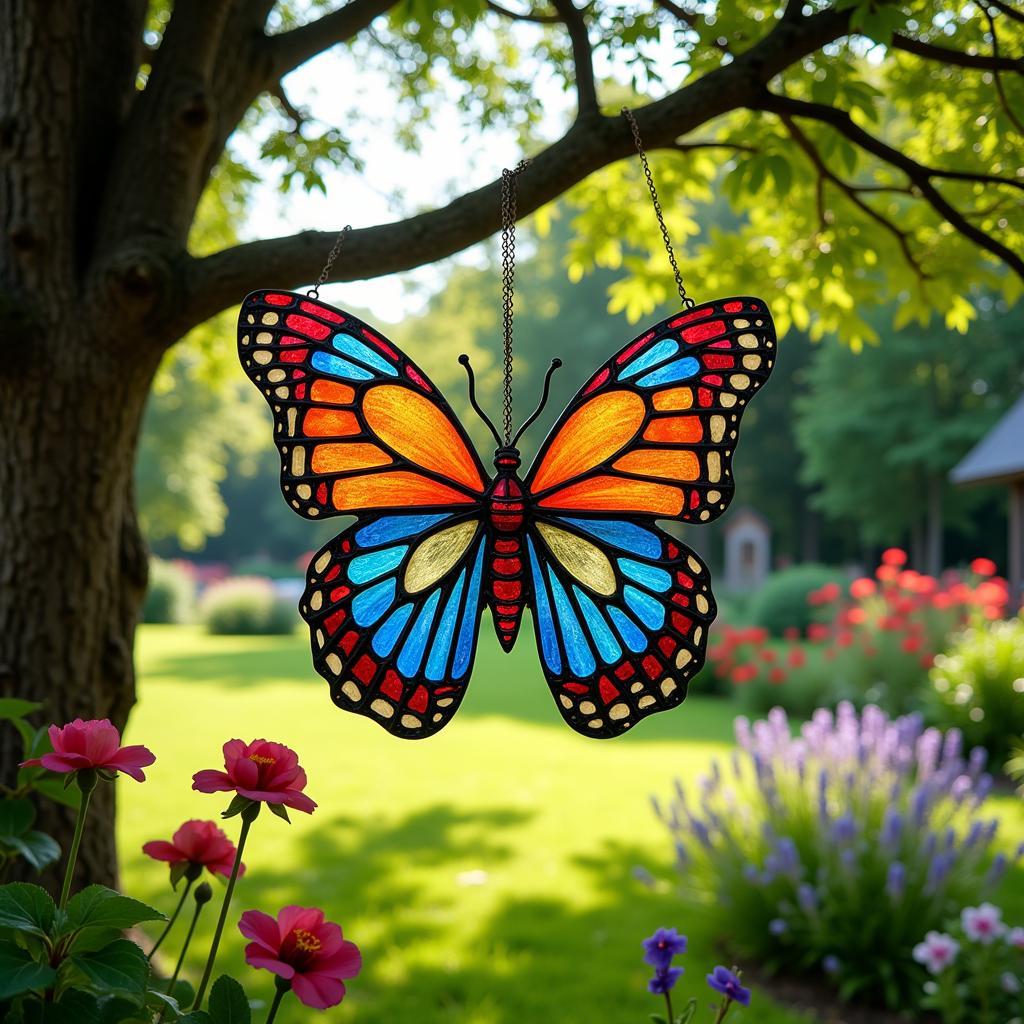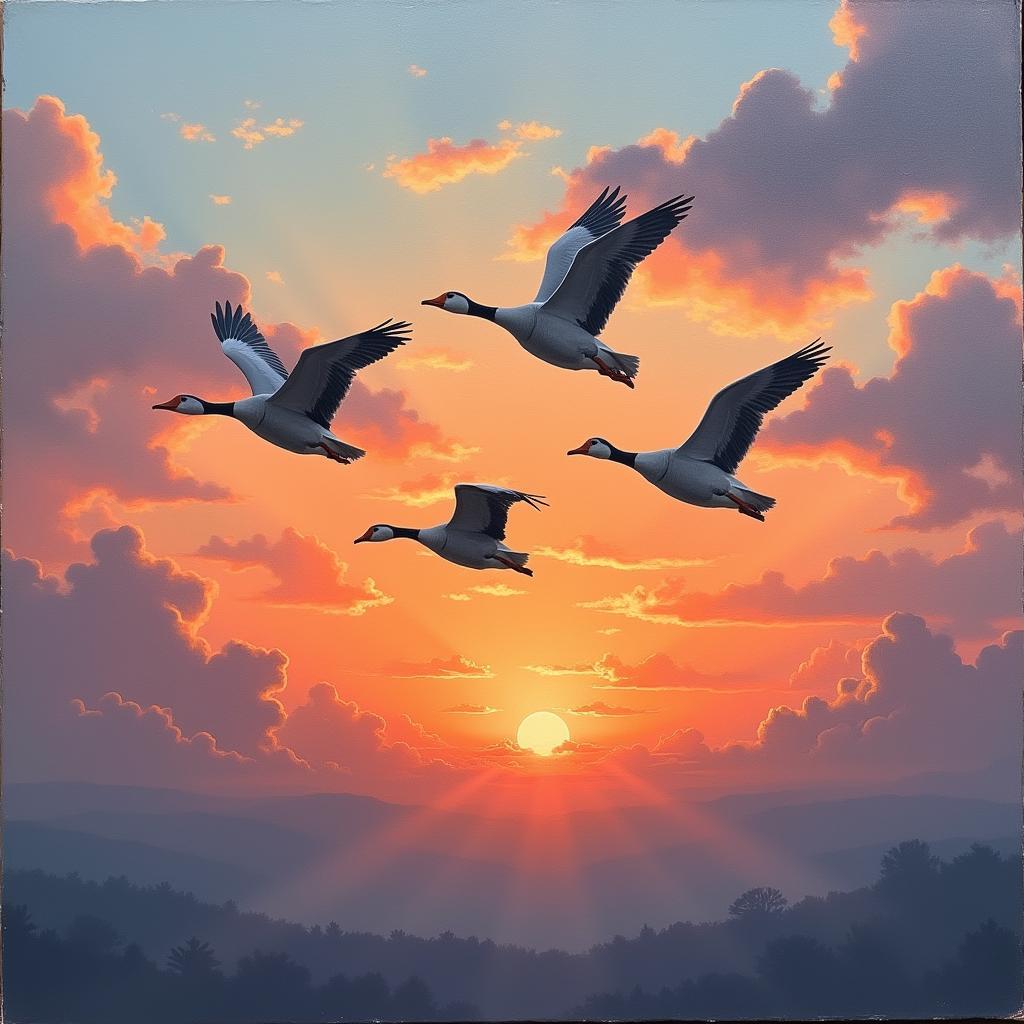Exploring the Beauty of Landscape Abstract Art
Landscape Abstract Art offers a captivating blend of nature’s grandeur and the artist’s imaginative interpretation. It’s a departure from traditional landscape painting, inviting viewers to experience the essence of a scene rather than a literal depiction. Through vibrant colors, dynamic compositions, and expressive brushstrokes, landscape abstract art evokes emotions and sparks contemplation. See how this art form has evolved and how you can even create your own abstract landscapes.
Understanding Landscape Abstract Art
What exactly is landscape abstract art? It’s a genre that uses the fundamental elements of landscapes – mountains, trees, water, sky – as a starting point, then abstracts these forms into non-representational compositions. The goal isn’t to create a photorealistic image, but to capture the feeling, the atmosphere, the energy of the landscape. Think of it as a visual poem, where colors and shapes tell a story of the artist’s connection with nature. This could involve using bold blocks of color to represent a sunset or swirling lines to evoke the movement of wind through a field. If you’re drawn to mid century modern art posters, you might appreciate the similar emphasis on color and form found in abstract landscapes.
Imagine standing on a windswept cliff overlooking the ocean. The vastness of the sky, the crashing waves, the rugged terrain – these elements inspire a landscape abstract artist to create a work that captures the essence of that experience.
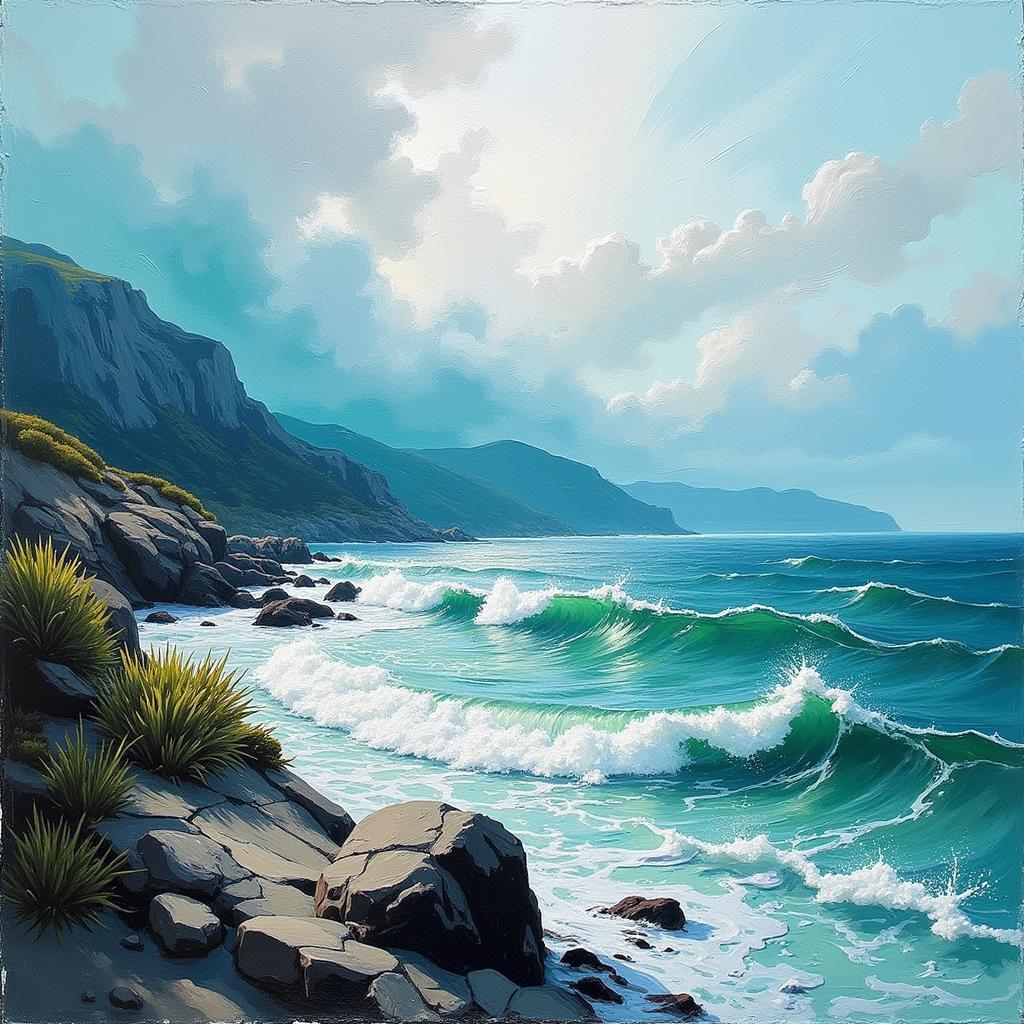 Windswept Coastal Abstract Landscape Painting
Windswept Coastal Abstract Landscape Painting
The Evolution of Landscape Abstract Art
From the early 20th century, artists began to explore abstraction in various forms. Landscape painting wasn’t immune to this shift. Pioneers like Wassily Kandinsky and Paul Klee incorporated abstract elements into their landscapes, paving the way for a new genre. Later, artists like Helen Frankenthaler and Joan Mitchell further developed landscape abstract art, pushing the boundaries of color and form. They explored different techniques, like color field painting and action painting, to express their unique perspectives on nature. Today, landscape abstract art continues to evolve, with contemporary artists experimenting with new materials and digital technologies.
Key Elements of Landscape Abstract Art
Certain elements define landscape abstract art. Color plays a vital role, evoking specific moods and emotions. Bold hues can represent the vibrancy of a summer landscape, while muted tones might convey the quiet stillness of winter. Composition is equally important, creating balance and visual interest. The arrangement of shapes and lines can suggest the rolling hills, towering mountains, or flowing rivers of a landscape. Texture adds another layer of depth and complexity, whether it’s the rough texture of impasto or the smooth surface of a resin finish.
Creating Your Own Landscape Abstract Art
Creating landscape abstract art can be an incredibly fulfilling experience. It allows you to connect with nature in a new way and express your creativity. You don’t need to be a trained artist to start. The beauty of abstract art lies in its freedom of expression. If you’re intrigued by different artistic expressions, you might also appreciate the vibrant world of coffee print art.
Materials You’ll Need
- Canvas or paper
- Acrylic or oil paints
- Brushes
- Palette knife
- Water container
- Rags or paper towels
Steps to Creating an Abstract Landscape
- Find Inspiration: Go for a walk in nature, browse landscape photographs, or simply recall a favorite outdoor scene.
- Choose Your Colors: Select a palette of colors that reflect the mood and atmosphere you want to convey.
- Sketch Your Composition: Lightly sketch the basic shapes and lines of your landscape onto the canvas. Remember, these are just guidelines; you don’t need to be precise.
- Apply Paint: Start applying paint to the canvas, using brushes and palette knives to create texture and movement.
- Layer and Blend: Experiment with layering different colors and blending them together to create depth and complexity.
- Add Details: Once the paint is dry, you can add details with a smaller brush or other tools.
- Final Touches: Step back and assess your work. Make any necessary adjustments and add a final layer of varnish if desired.
Where to Find Landscape Abstract Art
Landscape abstract art can be found in galleries, art fairs, and online marketplaces. Many artists specialize in this genre, and their work can range from small, intimate pieces to large-scale installations. You might also find inspiration in unexpected places, like blue bathroom art which often uses abstract principles to evoke calmness and tranquility.
Tips for Choosing Landscape Abstract Art
- Consider the colors and composition: Do they evoke the emotions you want to feel in your space?
- Think about the size and scale: Will the artwork fit comfortably in your room?
- Research the artist: Learn about their background and inspiration.
- Trust your instincts: Choose a piece that speaks to you on a personal level. For those with a more traditional taste, American patriotic art offers a different perspective on landscape and national identity.
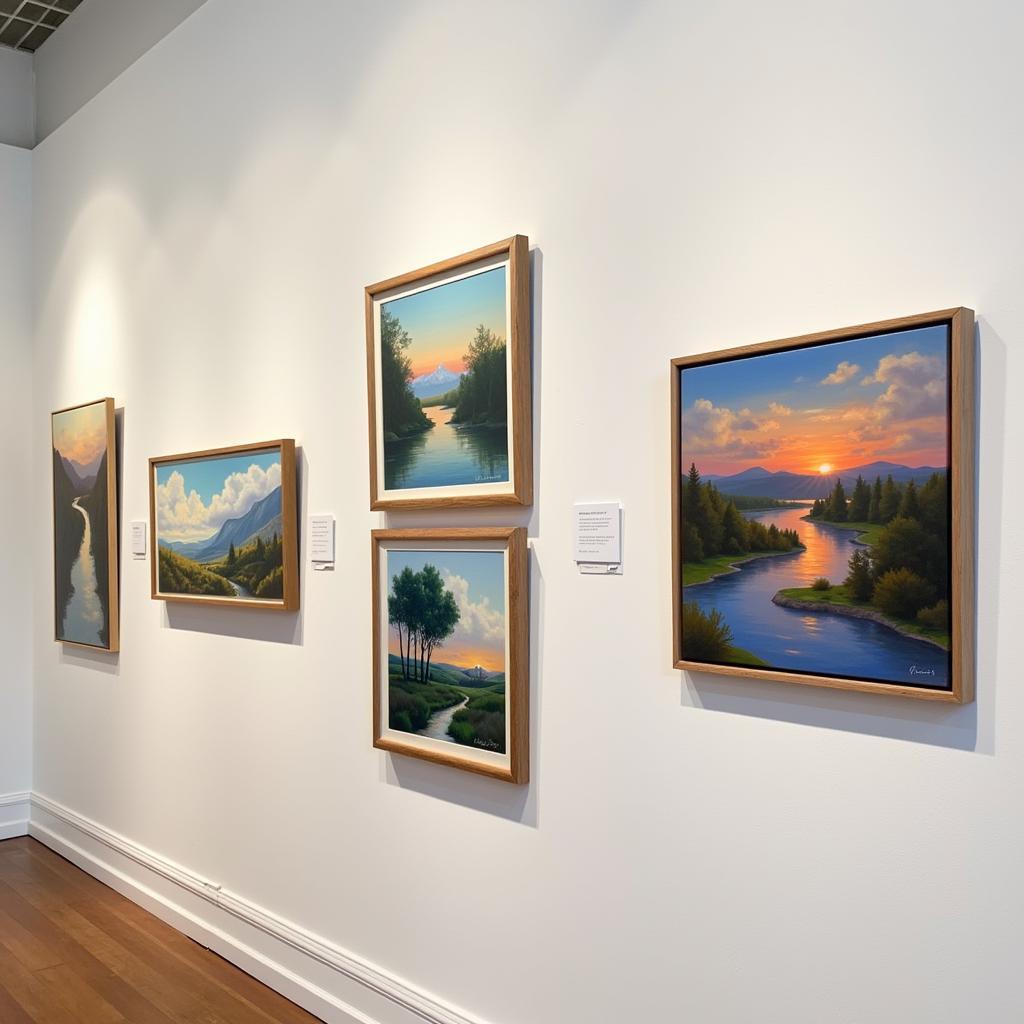 Gallery Wall Featuring Abstract Landscape Paintings
Gallery Wall Featuring Abstract Landscape Paintings
Conclusion
Landscape abstract art offers a unique and compelling way to experience the beauty of the natural world. By moving beyond literal representation, it taps into the emotional and spiritual connection we have with our surroundings. Whether you’re an art enthusiast, a collector, or simply someone who appreciates the power of visual art, landscape abstract art is sure to inspire and captivate.
FAQ
- What is the difference between abstract art and landscape abstract art?
- Who are some famous landscape abstract artists?
- How can I incorporate landscape abstract art into my home decor?
- What are the different techniques used in landscape abstract art?
- Where can I buy original landscape abstract art?
- How can I learn to create my own landscape abstract art?
- What are some good resources for learning more about landscape abstract art?
Scenarios and further questions:
-
Scenario: You are looking to decorate your living room with a large statement piece. Question: What size and style of landscape abstract art would best suit a large living room?
-
Scenario: You are on a budget but still want to incorporate landscape abstract art into your home. Question: Where can I find affordable landscape abstract art prints or reproductions?
-
Scenario: You are interested in learning more about the history and development of landscape abstract art. Question: Are there any books or documentaries that you recommend?
For any further assistance, please contact us at Phone: 02462573573, Email: danteum@gmail.com, or visit us at Savico Megamall, 7-9 Đ. Nguyễn Văn Linh, Gia Thụy, Long Biên, Hà Nội 10000, Việt Nam. We have a 24/7 customer service team.
